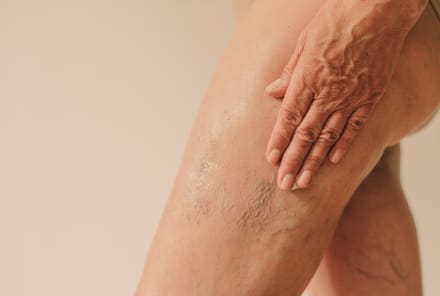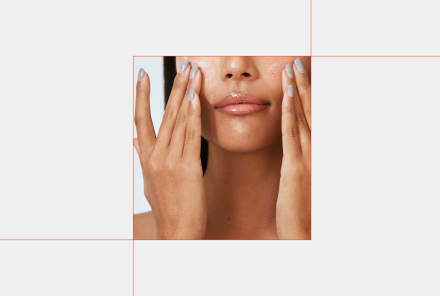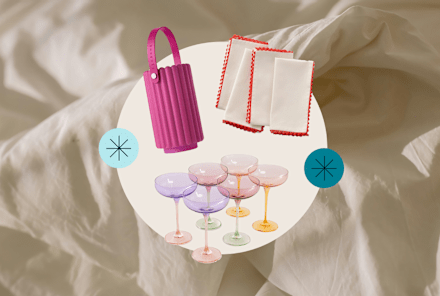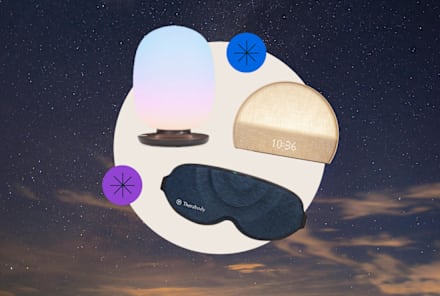Advertisement
This Dermatologist's Oilplaning Technique Is A+ For Sensitive Skin


While exfoliation, in general, typically offers glowing results, some methods are more immediately gratifying than others. Case in point: dermaplaning.
By gently scraping off layers of dead skin, peach fuzz, and overall grime, you instantly leave your skin radiant and silky-smooth to the touch. Not to mention, your skin care products can penetrate the skin better, as the ingredients have a clear course free of buildup.
Although, if taking a blade to your face sends chills down your spine, you're not alone: Especially for those with sensitive skin, scraping at the surface may be way too harsh of a treatment; experts say you may be better off with gentle exfoliators, like lactic or mandelic acid.
But let's not write off dermaplaning so quickly: According to board-certified dermatologist Alexis Stephens, D.O., you can have your immediate glow and nourish your sensitive skin, too. "One of my favorite beauty secrets for glowing skin is oilplaning," she says in a recent TikTok.
Below, she explains why the tweaked treatment is top-notch for easily irritated skin.
What is oilplaning?
Essentially, it's just dermaplaning with an oil. See, a dermaplane does its best work on clean, dry skin—the blade won't stick as well on a slick surface. So for some looking for a less intense treatment (namely, those with dry or sensitive skin), a barrier is just what they need.
That's where the oil comes into play: "The oil acts as a barrier, helping to reduce the risk of irritation, and it's a complete game-changer for anyone who has dry, sensitive skin looking for an effective gentle way to exfoliate," notes Stephens. In a more in-depth YouTube video, she adds, "It makes the procedure more comfortable for those with sensitive skin."
How to do it
If you're familiar with dermaplaning, you'll recognize most of the steps here. Just don't forget to sneak an oil into the regimen:
Cleanse the skin
Make sure your skin is completely free of any product (makeup, sunscreen, et al.) before dermaplaning. Let the skin air-dry for a few minutes before slipping on the oil.
Analyze the skin
While your skin is drying, take a closer inspection: "Look for any texture irregularities, any raised moles, skin tags, open areas or sores, active acne, or papules," says Stephens. "Make sure to avoid these areas." You don't want to reopen any wounds or blemishes with the blade and potentially cause inflammation and scarring.
Apply your oil
Here's where oilplaning differs from the regular ol' dermaplane: Before picking up the blade, apply an even layer of oil to the skin.
In terms of which oil to choose, you have options: "My favorite oils for oilplaning are rich in linoleic acid," says Stephens. Not only does it have benefits for acne and hyperpigmentation1, but the naturally occurring fat also absorbs quickly into the skin without clogging pores. "My favorites are rosehip seed oil, squalane oil, hemp seed oil, sunflower seed oil, or even grapeseed oil," Stephens adds.
Dermaplane with light strokes
Once you apply your oil, you're ready to dermaplane. Start in sections, pulling the skin taut with your other hand before scraping downward with short, light strokes. Allow the weight of the blade to do all the work—no need to apply any pressure. "Use a cotton round or towel to wipe the blade clean after each section or as needed," says Stephens.
As for angled areas like the chin and upper lip, Stephens suggests tucking in your lips to balloon the surface area and make it easier to shave. Make sure to skip delicate areas like under the eyebrows or around the eyes—the skin there is simply way too thin.
Remove excess oil
After you're done blading, use a damp cotton round, muslin cloth, or microfiber towel to wipe away any excess oil.
Follow with a serum or moisturizer
Considering one of the main advantages of dermaplaning is to quite literally pave the way for subsequent skin care products, apply your serum or moisturizer of choice to restore hydration and let those good-for-you ingredients absorb into the skin. For the sensitive among us, you may want to slather on calming, soothing ingredients post-blade (aloe and colloidal oat come to mind), just in case you face any irritation.
The takeaway
When it comes to dermaplaning, those with sensitive skin should proceed with extra caution. For some, the scraping may just be too harsh—which is why you may want to slip on an oil to buffer the treatment. Still, it's important to know your limits, but oilplaning may be the less intense (yet just as immediately gratifying) option.
Watch Next
Enjoy some of our favorite clips from classes
Enjoy some of our favorite clips from classes
What Is Meditation?
Mindfulness/Spirituality | Light Watkins
Box Breathing
Mindfulness/Spirituality | Gwen Dittmar
What Breathwork Can Address
Mindfulness/Spirituality | Gwen Dittmar
The 8 Limbs of Yoga - What is Asana?
Yoga | Caley Alyssa
Two Standing Postures to Open Up Tight Hips
Yoga | Caley Alyssa
How Plants Can Optimize Athletic Performance
Nutrition | Rich Roll
What to Eat Before a Workout
Nutrition | Rich Roll
How Ayurveda Helps Us Navigate Modern Life
Nutrition | Sahara Rose
Messages About Love & Relationships
Love & Relationships | Esther Perel
Love Languages
Love & Relationships | Esther Perel



















